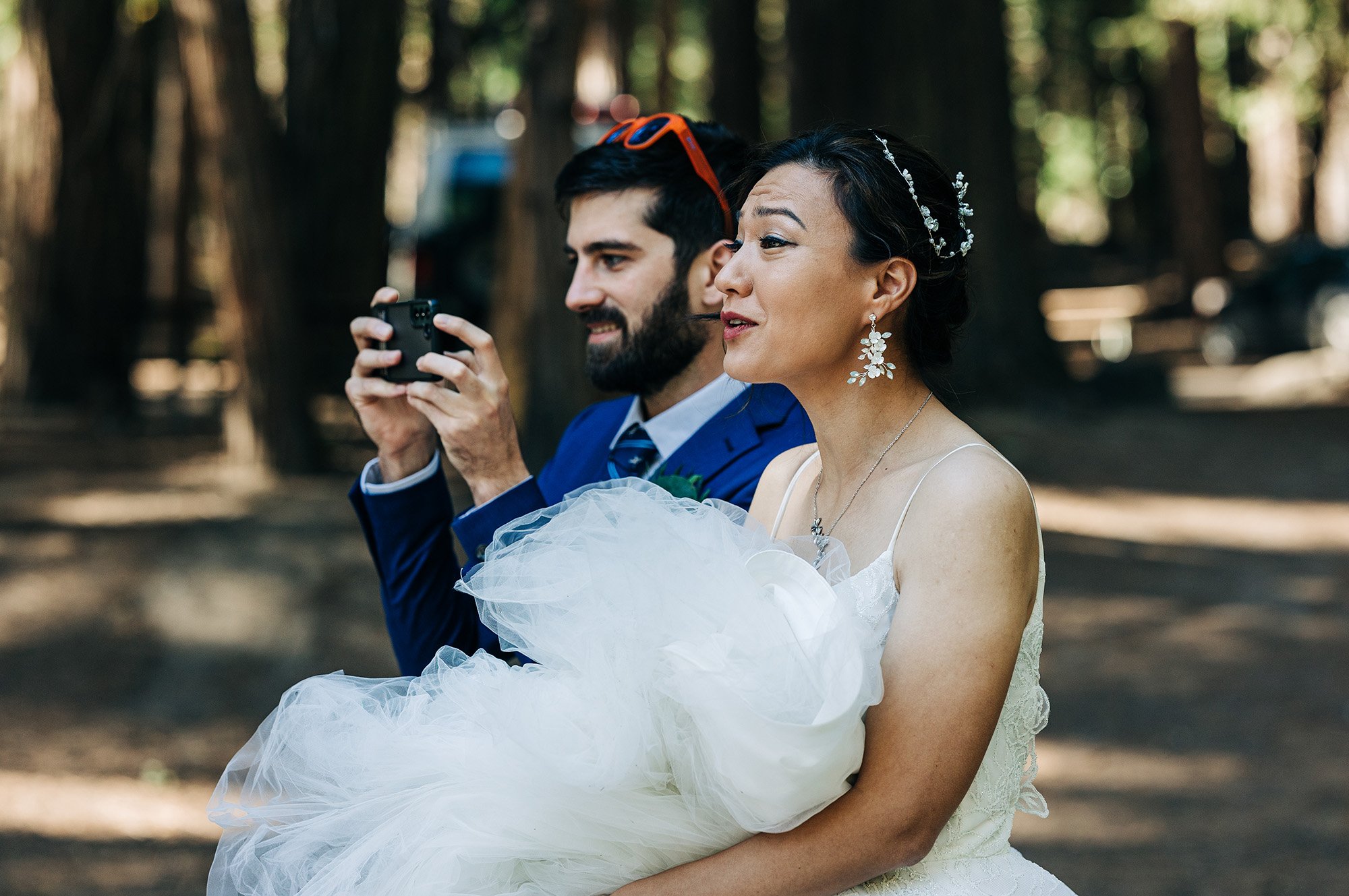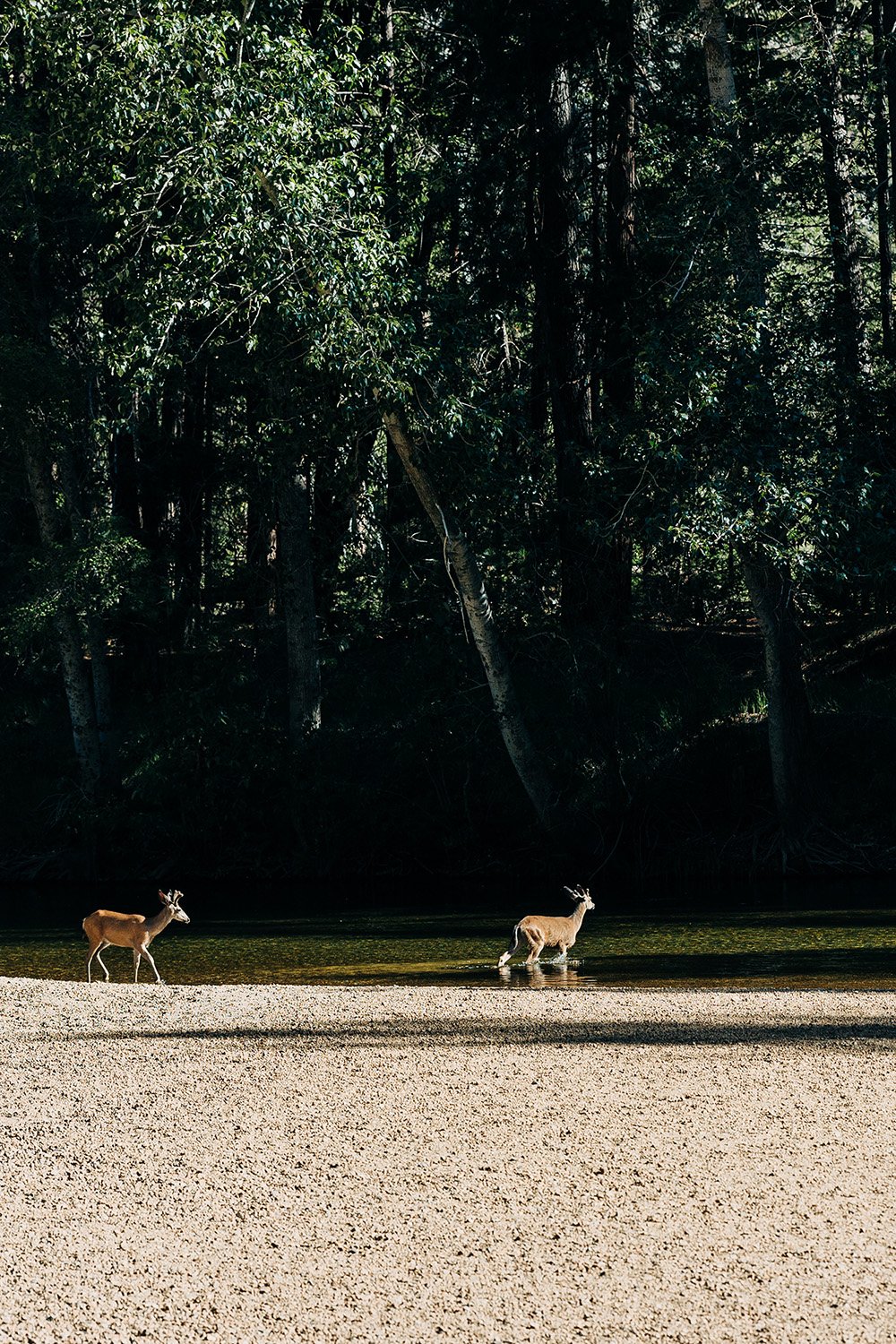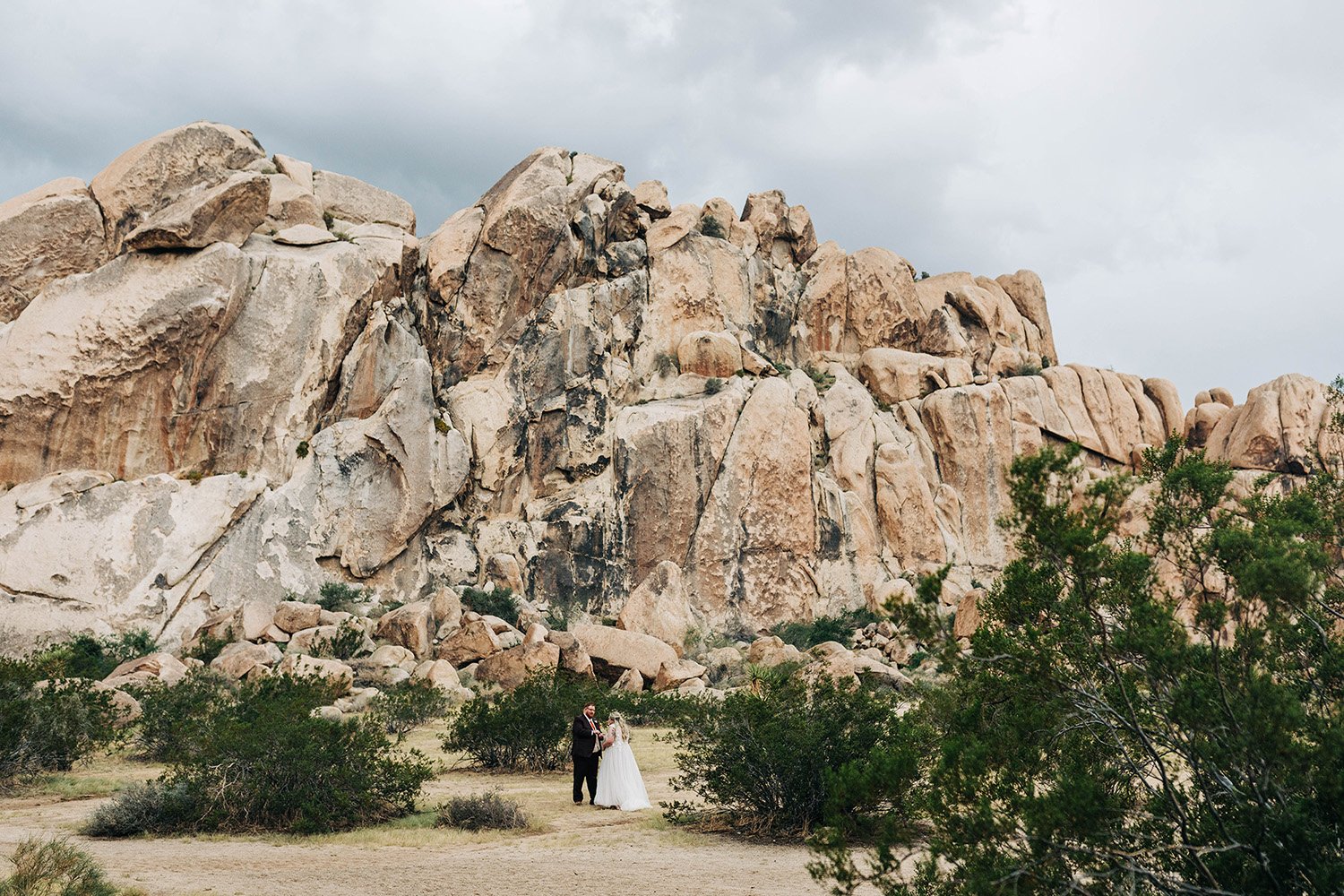Leave No Trace: What It Means for Your Adventure Wedding or Outdoor Elopement
If you are anything like me, you adore the outdoors! There’s nothing quite as refreshing as swimming in a crisp cool natural stream, forest bathing in an old grove, or bouldering in the desert.
Chances are, if you are on my website, you also share a deep affinity for the natural world. We all appreciate a happy and healthy natural environment. But in order to keep it that way, we all have to take personal responsibility. Nobody likes seeing lakes full of candy wrappers, trashed campsites, or ruined hiking trails. That completely ruins the experience for us humans and—more importantly—destroys the environment for the flora and fauna that live there.
Luckily, there are some easy guidelines to follow that ensure a happy, healthy environment for everyone known as Leave No Trace. These guidelines are helpful anytime you’re outside, but they are all the more important when you are considering an outdoor wedding or adventure elopement. So, without further ado…
What Is Leave No Trace (LNT)?
Leave No Trace (LNT) is a set of guidelines designed to protect and preserve natural environments.
The seven LNT principles include:
Plan ahead and prepare. This is always good advice. Research an area before you visit and prepare for whatever activities you plan to do. This includes prepping what to bring, checking the weather, investigating local restrictions, and all the rest. If you have any questions ahead of your outdoor wedding day, ask your photographer or reach out to a park ranger (if applicable).
Travel and camp on durable surfaces. When hiking to your first-look spot, for example, stick to well-worn trails. Are you camping for your adventure wedding? Pitch your tent on areas with clear signs that someone has camped there before. Too much human foot traffic or vehicle traffic tramples plants and can tear up the ground, preventing further growth.
Properly dispose of waste. Trash happens. It’s what you do with that waste that makes a difference. Dispose of trash or recycling in proper receptacles, if available. As for human waste, if there are no bathrooms, you can either bury waste at least six inches underground (depending on the environment) or pack it out in a wag bag—yes, this counts for weddings too! This leads to a good point in general: When in doubt, pack it out. If you were able to bring it into an area, you can just as easily leave with it.
Leave what you find. It’s easy to fall in love with a pretty stone, a colorful leaf, or a happy mushroom. And it might be tempting to pocket it and take it home. But it’s better to leave it be.
Minimize campfire impacts. Roasting some smores with your wedding party? Sparking a bonfire to celebrate the day with your besties? It’s always wise to check local fire restrictions when visiting an area. What’s acceptable at one time might be verboten at another. So always check before sparking a campfire. Also, make sure your campfire is dead out before leaving it unattended. It’s incredible how campfires can reignite without notice or how embers can turn into runaway fires. If you can place your bare hand over the coals for a full 20 seconds, it’s probably safe.
Respect wildlife. Give animals space to be animals. This includes keeping food stored away from sneaky critters. If you’re lucky enough to see wildlife during your ceremony, go ahead and take a moment to appreciate their presence. It can be really special.
Be considerate to other visitors. The great outdoors belongs to everyone, even on your wedding day. Be sure to follow hiking etiquette. If someone is disturbing your wedding ceremony, it’s totally okay to politely ask them to stop. But since you don’t own the outdoors, you can’t really force anyone to do anything.
Why Leave No Trace Is Important?
Leave No Trace offers common sense guidelines that keep outdoor areas healthy and accessible for human visitors and non-human denizens. But LNT is just the baseline. Each national park, state park, or outdoor area also has its own restrictions you need to abide by. For example, Joshua Tree National Park only allows pets in the parking lots, and Death Valley National Park prohibits the baby's breath flower.
Some areas are super lenient, allowing for everything from off-roading to campfires—while others are much more strict with prohibitions against dogs, types of flowers or bouquets that can be brought in, and the number of wedding guests. Trust that all of these restrictions are made in good faith to protect the land for generations to come.
What Does LNT Mean for Your Wedding or Elopement?
Outdoor weddings and elopements are under increased scrutiny. Since weddings are considered events, they often require special permitting. Depending on the location, the couple may need to apply for a permit to have their wedding in a national or state park (for example)—while in other cases, it might be the photographer who needs to apply for the permit.
Don’t worry, you aren’t alone in this process. All of this will be covered by your outdoor wedding or elopement photographer. And, of course, you can—and should—contact park rangers ahead of time to suss out the rules and requirements.
But to give you a taste of what to expect, there might be restrictions regarding:
Campfires
Wedding arches
Number of guests
Flowers and bouquets (to prevent invasive species)
Rugs, chairs, tables, or other items
Pets
Accessibility needs
If you have a specific question, it’s always smart to ask ahead of time!
Our Commitment to LNT Principles
Love & Latitudes Outdoor Wedding and Elopement Photography takes LNT very seriously. We do our best to ensure we (and our clients) are always in full compliance with the rules. If we gently remind you to stay on trail, for instance, just know that we are doing so for everyone’s benefit. Weddings are a lot of fun, and it’s easy to forget the rules. So we try to stymie issues before they turn into problems.
You can even make LNT a fun activity for your guests. We’ve had more than a few couples assign duties to their attendees—like picking up fallen flowers, collecting empty bottles and cans, or tending and putting out fires. It’s a really cool way to include your guests in your wedding festivities—and we’ve seen some friends of the couple take it super seriously!
It’s entirely possible that some of your guests might not be outdoorsy people. LNT principles are an easy-to-share set of guidelines that help people feel more comfortable, knowledgeable, and capable when in nature. We’ve seen guests get turned on to outdoor activities from adventure weddings, so introducing LNT principles is a great starting point.
Are you ready to book an outdoor wedding or elopement? Love & Latitudes Photography can help capture the day in all its splendor! Book with us today!









